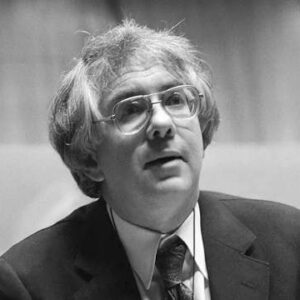Sheldon Lee Glashow is an American theoretical physicist. He shared the 1979 Nobel Prize for Physics for his work on the electroweak theory, which shows how electromagnetism and the weak force are the same things. In addition to being the Metcalf Professor of Mathematics and Physics at Boston University and a member of the Board of Sponsors for the “Bulletin of the Atomic Scientists,” he is a well-known academic. He was born in New York City to Jewish parents who came from Russia. He grew up in a middle-class home. Even though neither of his parents had been able to get a good education, they were adamant that their children go to college. He was smart and interested in science from a young age. He went to the Bronx High School of Science, where he met Gary Feinberg and Steven Weinberg, who would also become scientists. He had no doubt that he would become a scientist when he grew up. After getting a Bachelor of Arts from Cornell University and a Ph.D. in physics from Harvard University, he went into academia and held different jobs in the physics department at Harvard for a number of years. In the 1960s, he started working on models for electroweak unification, which led to him winning the Nobel Prize.
Early years and childhood
Sheldon Lee Glashow was born on December 5, 1932, in New York City, New York, US. His parents, Bella (Rubin) and Lewis Gluchovsky were Jewish people who came to the US from Russia. He had two brothers who were older. His plumber father worked very hard and, after years of struggle, was able to give his family a good life in the middle class.
His parents didn’t have a good education, so they were very careful to make sure that each of their children did. Sheldon always wanted to be a scientist, while his older brothers went into dentistry and medicine.
He went to the Bronx High School of Science, where he met Gary Feinberg and Steven Weinberg, who became his friends. In 1954, he got a Bachelor of Arts from Cornell University, and in 1959, he got a Ph.D. in physics from Harvard University.
His thesis was called “The Vector Meson in Elementary Particle Decays.” His Ph.D. advisor was the Nobel Prize-winning physicist Julian Schwinger, with whom he wrote a paper on weak-electromagnetic unification.
Sheldon Lee Glashow’s Career
Sheldon Lee Glashow did part of his post-doctoral work at CERN and part at the Niels Bohr Institute in Copenhagen. He also wanted to work at the Lebedev Institute in Moscow, but he never got his visa. He thought this was a blessing because it gave him time to work on the SU(2) x U(1) structure of the electroweak theory from 1958 to 1960.
From 1962 to 1966, he was an associate professor at the University of California, Berkeley. In 1964, he and James Bjorken worked together to predict the existence of a fourth quark, called the charm quark. At that time, scientists had found four leptons but only three quarks.
In 1966, he became a teacher in the physics department at Harvard. In 1979, he was given the title of Higgins Professor of Physics. He worked at Harvard for the rest of his life, and in 2000, he was given the title “emeritus.”
In 1970, the GIM mechanism built on his work on quarks showed that the two pairs of quarks (d.s) and (u,c) would mostly cancel out neutral currents that change the flavor. With the discovery of the charm quark, a problem with any quantum field theory with an uneven number of quarks and leptons was fixed. In 1973, Glashow and Howard Georgi came up with the first grand unified theory.
He has also been a visiting scientist at CERN and a professor at the University of Marseilles, MIT, Brookhaven Laboratory, Texas A&M, the University of Houston, and Boston University. He has done research in a number of areas, such as the Big Bang Theory, the breaking of electroweak symmetry, dark matter, and cosmology.
Works of note
He is a world expert on electroweak interaction, which is a way to describe two of nature’s four basic interactions: electromagnetism and weak interaction. His work on the electroweak theory helped explain how electromagnetism and the weak force work together.
Sheldon Glashow and Howard Georgi came up with the Georgi–Glashow model, which is one type of grand unification theory (GUT). In this model, the standard model gauge groups SU(3), SU(2), and U(1) are combined into a single simple gauge group called SU (5).
Awards & Achievements
Feza Gürsey and Glashow both got the J. Robert Oppenheimer Memorial Prize in 1977.
The 1979 Nobel Prize in Physics was shared by Sheldon Lee Glashow, Abdus Salam, and Steven Weinberg “for their contributions to the theory of the unified weak and electromagnetic interaction between elementary particles, such as predicting the weak neutral current.”
Personal History and Legacies
In 1972, Sheldon Lee Glashow tied the knot with Joan Shirley Alexander. They are parents to four kids.
Estimated Net worth
Sheldon is one of the wealthiest and most well-known physicists. Based on what we found on Wikipedia, Forbes, and Business Insider, Sheldon Lee Glashow has a net worth of about $15 million.


